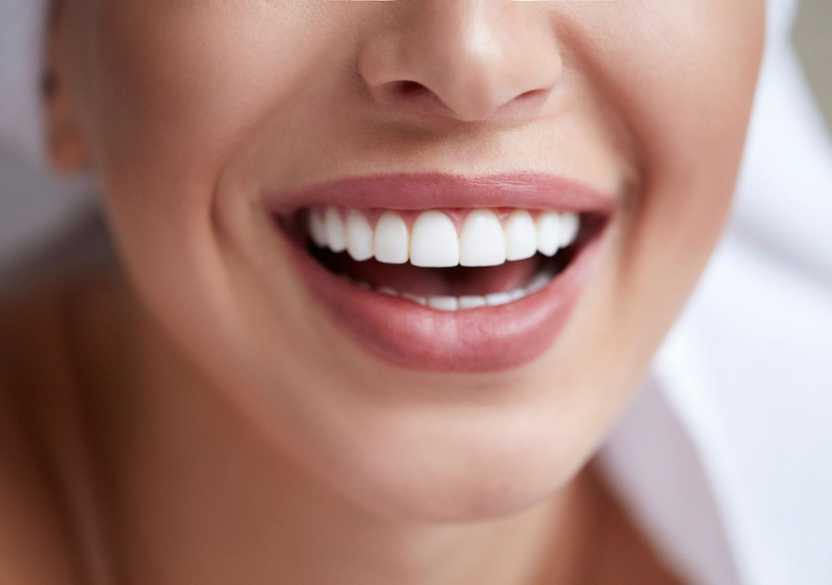The top benefits of mastic gum for oral health
Explore the dental benefits of Chios mastic gum, from fighting cavities and reducing plaque to freshening breath and improving oral health.

For more than 2,500 years, Chios mastic gum from the Greek island of Chios has been studied for its therapeutic benefits in promoting oral health & hygiene, as well as addressing deeper dental concerns thanks to its robust botanical profile boasting antioxidant, anti-inflammatory, anti-microbial, and antibacterial activity.
Today, numerous studies highlight the significant benefits of mastic chewing gum for promoting oral hygiene, fresh breath, and clean teeth. We break down the major oral hygiene benefits of mastic gum in this article.

May help fight cavities
For centuries, mastic chewing gum has been used as a botanical remedy for tooth decay and dental caries. Recent research has reinforced its potential effectiveness in combating cavities.
One of the leading causes of tooth decay is the proliferation of a bacteria known as streptococcus mutans. Mastic gum, boasting strong antibacterial properties, has demonstrated in studies an ability to eliminate this bacteria from the oral cavity.
A study conducted at Cukurova University involved 25 healthy adults who chewed mastic gum for 15 minutes and were subsequently tested at 30-minute intervals over a span of 2 hours. Samples from each participant were analyzed on petri dishes, revealing that mastic gum significantly inhibited the growth of S. mutans even after just 15 minutes of chewing. This suggests that mastic gum could serve as a potent antibacterial supplement in preventing cavity formation.1
May reduce plaque
Thanks to mastic gum’s powerful antibacterial, anti-inflammatory, and antioxidant properties, mastic gum suggests a strong ability to reduce plaque formation, gum inflammation, and harmful bacteria in the mouth.
In a double-blind randomized pilot study published in the Journal of Periodontology, 20 dental students were instructed to chew mastic gum for seven days. Plaque accumulation and gum inflammation were assessed before and after the trial period. The findings showed a notable reduction in plaque buildup and gum inflammation among the participants who chewed mastic gum compared to those who used the placebo gum.2
May help fight against gingivitis and periodontal disease
Evidence suggests that mastic gum can be powerful against gum disease, thwarting periodontal issues and oral pathogens. Mastic natural remedies surpassed even the effectiveness of common mouthwash ingredients such as hydrogen peroxide in a study.
Researchers studied how mastic extract fights against harmful bacteria in the mouth. They compared mastic extract against common mouthwash ingredients such as hydrogen peroxide and chlorhexidine. The results showed that mastic extract was more effective at preventing harmful periodontal and oral pathogens. Mastic extract exhibited significantly increased bacterial inhibition compared to hydrogen peroxide. The study suggests that mastic extract could be a natural and safe option for keeping our gums healthy by fighting off harmful bacteria.3

May reverse decay and remineralize teeth
Mastic gum has been evaluated for its potential to remineralize decayed tooth material with promising results.
A study by Tehran University compared the effects of mastic gum to xylitol gum, a well-studied and dentist-recommended compound known for its ability to restore tooth enamel. Fifteen adults chewed each gum for a three-week period, after which their premolars were examined. The results revealed that both gums led to similarly significant increases in remineralized tooth surfaces, suggesting that mastic gum is equally potent as xylitol in restoring tooth enamel.4
Freshens breath
The mastic gum of Greece is reputed for its historical use as a breath freshener, research delved into its potential impact on halitosis, or bad breath and found that, indeed, mastic gum is great at freshening breath.
A blind study had 35 young and healthy volunteers, ages 20 to 30 years old, provide saliva samples following chewing sessions. These samples were then evaluated for odor levels by a seasoned odor judge, who remained unaware of the contents in each test tube. Additionally, volatile sulfide compounds (known culprits behind bad breath) were measured using a sulfide monitor before and after the experiment.
The baseline saliva control scored a 4.5 on the odor scale, placing it between “strong odor” and “extremely foul odor.” Yet, the group using mastic gum exhibited a remarkable improvement, with their saliva odor score dropping to 2.5, shifting from the “strong foul odor” category to the “slight but noticeable odor” category. There was also a reduction in volatile sulfide compounds, decreasing from 4000 to 2000, marking a 50% reduction.5 This is a significant finding and testifies to the power of mastic gum in freshening breath.
Improves oral microbiome
Mastic gum has been appreciated for its ability to improve the oral microbiome thanks to its antimicrobial and antibacterial properties, capacity to simulate saliva, and targets major oral pathogens like mutans streptococci, as mentioned earlier. Studies have also demonstrated its effectiveness against periodontal bacteria and candida, further bolstering overall oral health & functioning.
A study observed the essential mastic oil extracted from mastic trees, known as pistacia lentiscus, and discovered found its remarkable effectiveness at killing periodontal bacteria and candida yeast, even at surprisingly low concentrations.This effectiveness was attributed to its anti-inflammatory properties, which involved the inhibition of key enzymes (such as cyclooxygenase and lipoxygenase) known for their role in oral inflammation. This study showed that mastic essential oil was highly effective at fighting gum disease causing bacteria without side effects harm to the oral cells.6
Chewing for maximum dental benefit
Chew for a duration of at least 15-30 minutes. Chewing mastic gum for at least 15-30 minutes per session—or up to 2 hours, has been associated with more pronounced dental benefits.
Chew after snacks or meals. This releases mastic gum’s beneficial compounds before oral bacteria has a chance to settle and cause harm. It also helps aid in digestion of your last meal.
Chew daily (or on a routine basis). Consistency is key, so aim to chew on a regular basis to facilitate long-term oral and dental health benefits.
Alternate chewing sides. This ensures that all molars are engaged, promoting the distribution of botanical benefits, enamel remineralization, and balanced saliva flow.
Consult with a healthcare professional for personalized guidance and recommendations, especially if you have specific dental concerns or conditions
Why Greco Gum
Greco Gum sources its gum directly from the Mediterranean island of Chios where mastic gum naturally thrives under optimal native conditions. This premium sourcing guarantees maximum botanical potency to enable worthwhile therapeutic wellness.
This article originally appeared online in 2024; it was most recently updated on February 20, 2024, to include current information.
References
Footnotes
-
Aksoy, A., Duran, N., Koksal, F. “In vitro and in vivo antimicrobial effects of mastic chewing gum against Streptococcus mutans and mutans streptococci.” Archives of Oral Biology, vol. 51, no. 6, June 2006, pp. 476-481. doi: 10.1016/j.archoralbio.2005.11.003. Epub 15 Dec 2005. PMID: 16343417 ↩
-
Takahashi, K., Fukazawa, M., Motohira, H., Ochiai, K., Nishikawa, H., Miyata, T. “A pilot study on antiplaque effects of mastic chewing gum in the oral cavity.” Journal of Periodontology, vol. 74, no. 4, April 2003, pp. 501-505. doi: 10.1902/jop.2003.74.4.501. PMID: 12747455 ↩
-
Koychev, S., Dommisch, H., Chen, H., Pischon, N. “Antimicrobial Effects of Mastic Extract Against Oral and Periodontal Pathogens.” Journal of Periodontology, vol. 88, no. 5, May 2017, pp. 511-517. doi: 10.1902/jop.2017.150691. Epub 8 Jan 2017. PMID: 28067105 ↩
-
Biria, M., Malekafzali, B., Kamel, V. “Comparison of the Effect of Xylitol Gum- and Mastic-chewing on the Remineralization Rate of Caries-like Lesions.” Journal of Dentistry, Tehran, vol. 6, no. 1, 2009, pp. 1-6. ProQuest document ID 250192950 ↩
-
Dental Biotechnology Ltd. “Echinacea, lavender, mastic gum and sage for treating halitosis.” European Patent Specification EP 2 066 304 B1, 02 July 2014. View PDF ↩
-
Milia, E., Usai, M., Szotáková, B., Elstnerová, M., Králová, V., D'hallewin, G., Spissu, Y., Barberis, A., Marchetti, M., Bortone, A., Campanella, V., Mastandrea, G., Langhansová, L., Eick, S. “The Pharmaceutical Ability of Pistacia lentiscus L. Leaves Essential Oil Against Periodontal Bacteria and Candida sp. and Its Anti-Inflammatory Potential.” Antibiotics (Basel), vol. 9, no. 6, 26 May 2020, Article no. 281. doi: 10.3390/antibiotics9060281. PMID: 32466371; PMCID: PMC7345856 ↩
